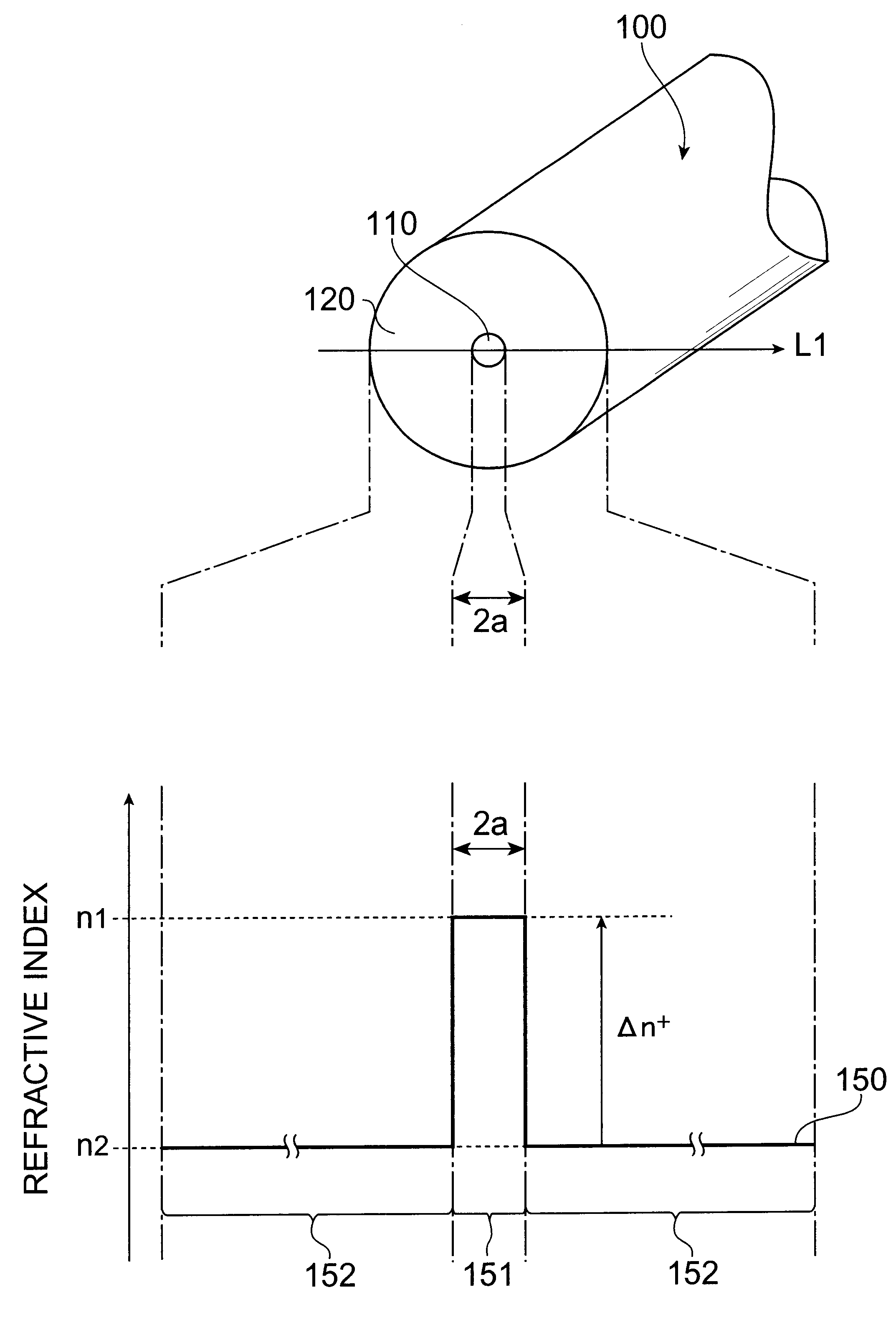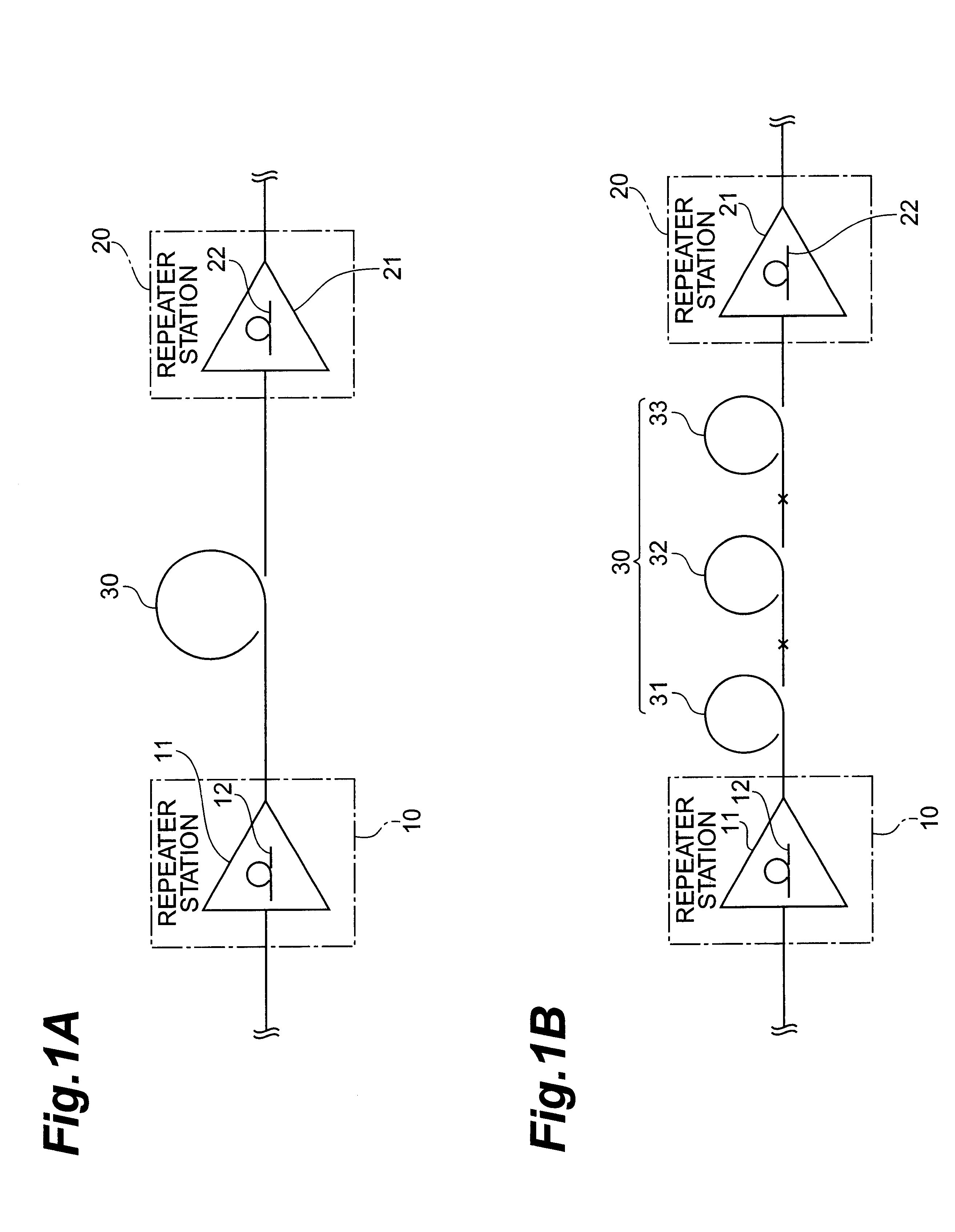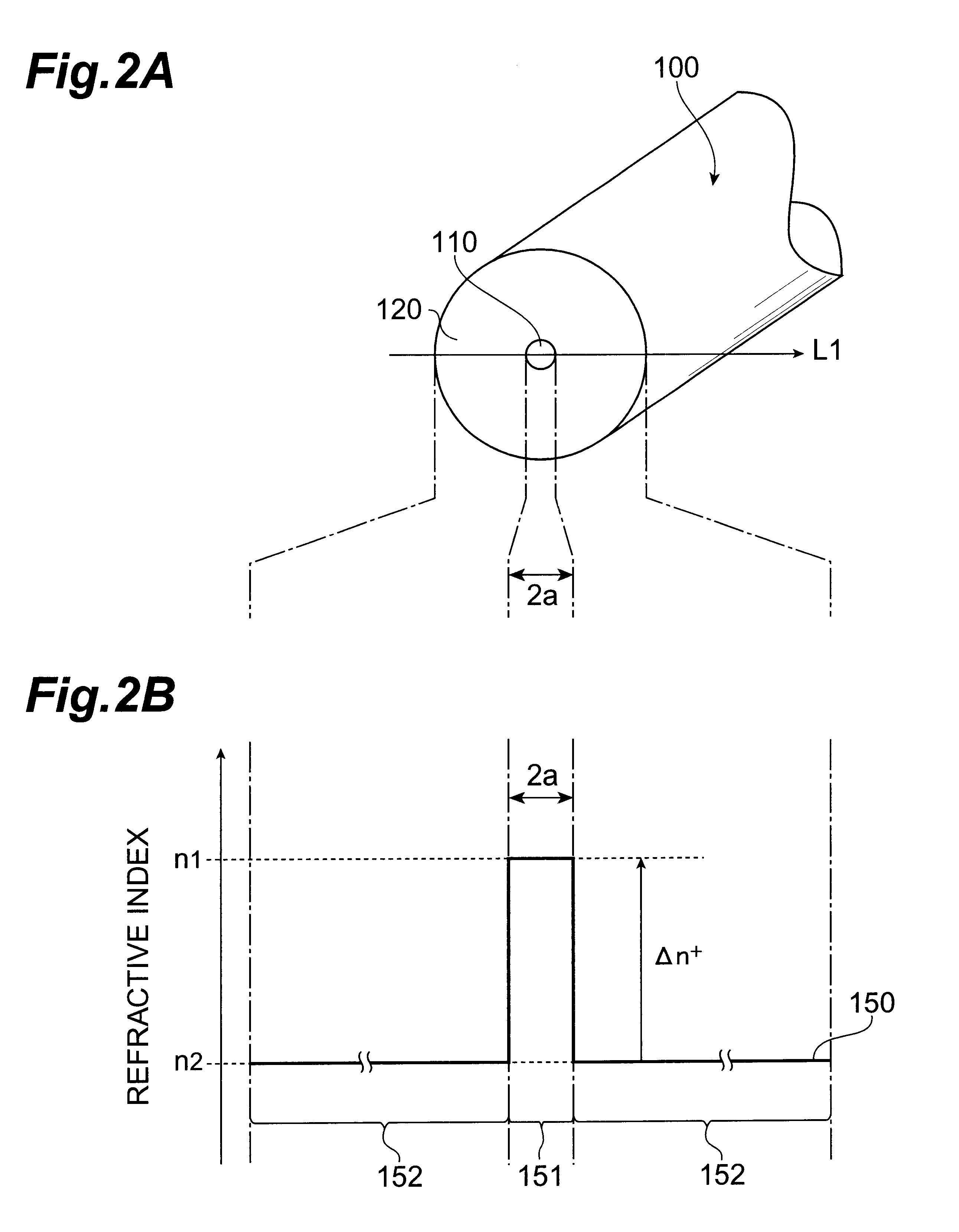Optical fiber and optical communication system including the same
a technology of optical communication system and optical fiber, applied in the field of optical fiber, can solve the problems of not fully suppressing the occurrence of nonlinear optical phenomena in g652 and g654 standards, and unable to carry out optical communications over a longer distance by utilizing the conventional optical fiber
- Summary
- Abstract
- Description
- Claims
- Application Information
AI Technical Summary
Benefits of technology
Problems solved by technology
Method used
Image
Examples
second applied example
The refractive index profile of the optical fiber in accordance with the present invention may have a shape which, in its core region, changes from the center part of the core region to the outer peripheral part thereof. FIG. 12 is a view showing the refractive index profile 450 of a second applied example of the optical fiber 200 in accordance with the second embodiment, which has a shape in which the refractive index in the core region decreases from the center part to its periphery as in the above-mentioned first applied example. The second applied example also has a structure similar to the cross-sectional structure shown in FIG. 4A. Namely, as with the optical fiber 200, the optical fiber in accordance with the second applied example has a core region having an outside diameter 2a and a maximum refractive index n1 in its center part; an inner cladding having an outside diameter 2b and a refractive index n2 lower than that of the core region; and an outer cladding, made of pure ...
third applied example
A third applied example of the optical fiber 200 in accordance with the second embodiment has a depressed cladding type refractive index profile in which, contrary to that of the above-mentioned second applied example, the refractive index in the core region decreases from the periphery toward the center part. FIG. 15 is a view showing the refractive index profile 550 of the optical fiber in accordance with the third applied example, which has a structure similar to the above-mentioned cross-sectional structure shown in FIG. 4A.
Namely, as with the optical fiber 200, the optical fiber in accordance with the third applied example comprises a core region having an outside diameter 2a and a maximum refractive index n1 in its peripheral part; an inner cladding having an outside diameter 2b and a refractive index n2 lower than that of the core region; and an outer cladding, made of pure silica glass, having a refractive index n0 higher than that of the inner cladding. The core region is d...
PUM
 Login to View More
Login to View More Abstract
Description
Claims
Application Information
 Login to View More
Login to View More - R&D
- Intellectual Property
- Life Sciences
- Materials
- Tech Scout
- Unparalleled Data Quality
- Higher Quality Content
- 60% Fewer Hallucinations
Browse by: Latest US Patents, China's latest patents, Technical Efficacy Thesaurus, Application Domain, Technology Topic, Popular Technical Reports.
© 2025 PatSnap. All rights reserved.Legal|Privacy policy|Modern Slavery Act Transparency Statement|Sitemap|About US| Contact US: help@patsnap.com



